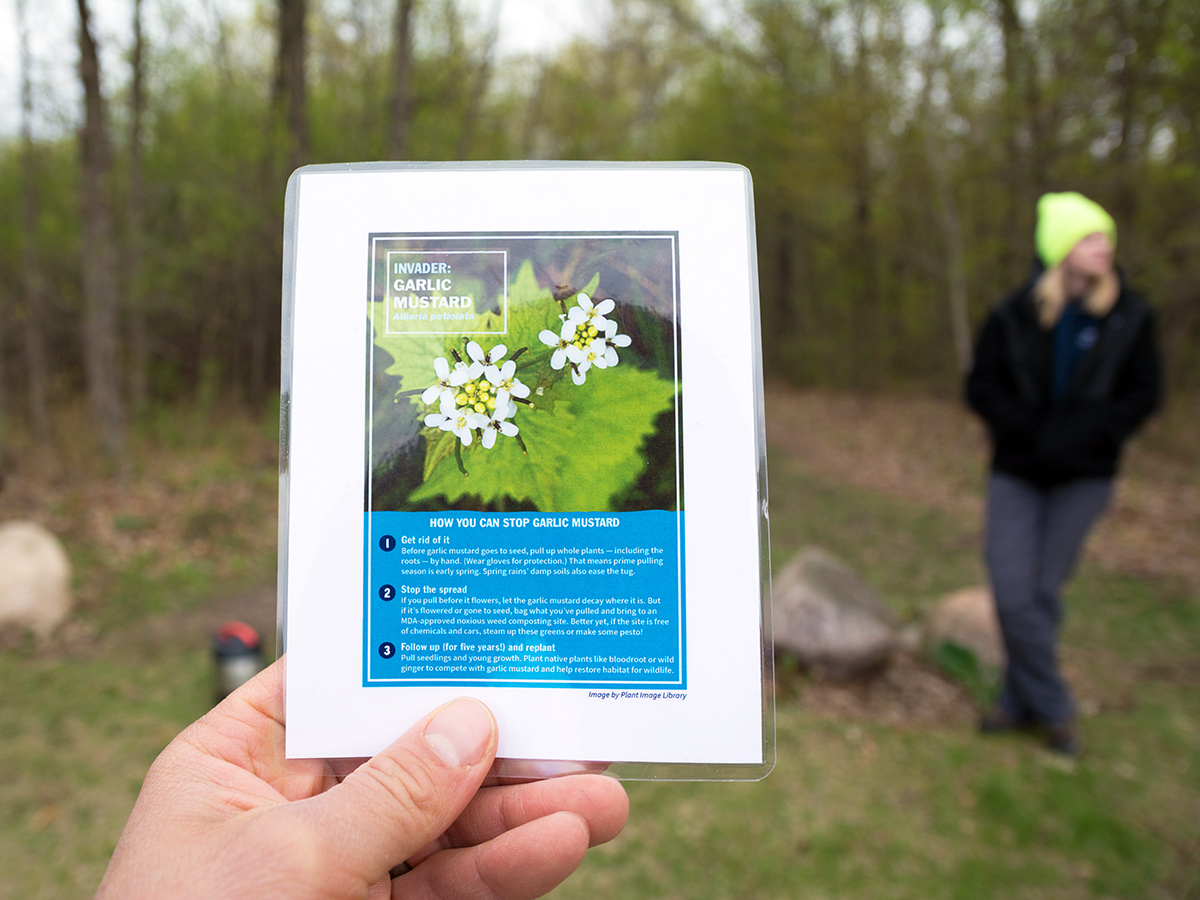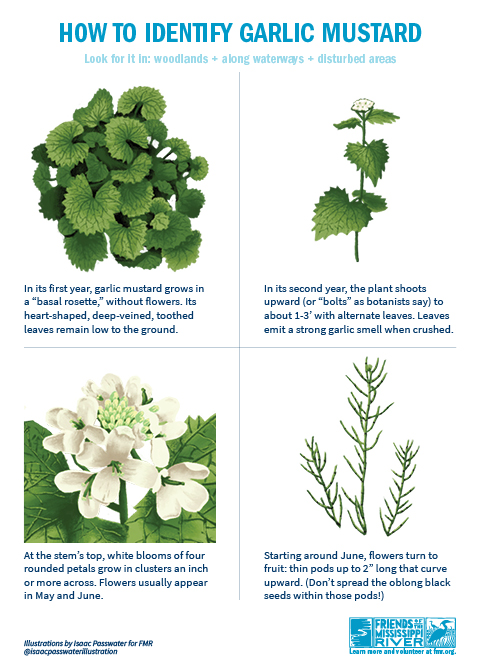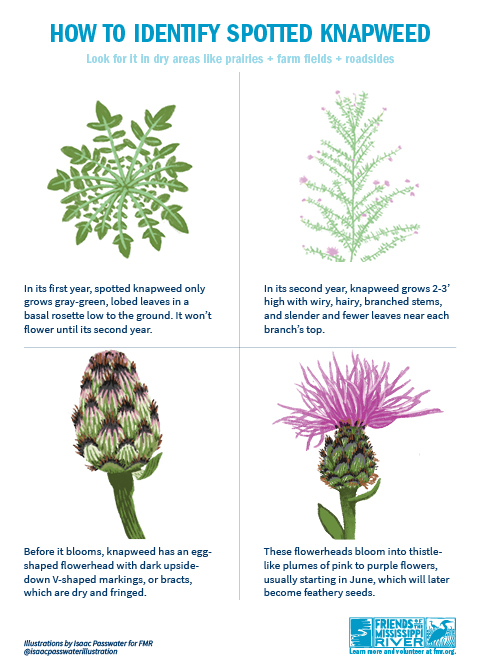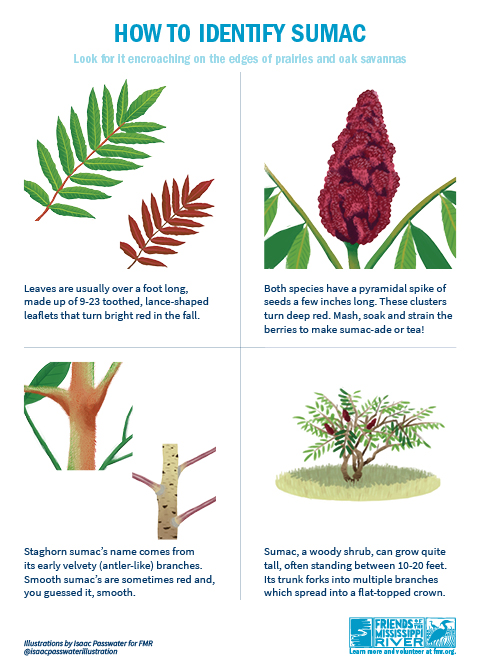Collect them all: Invasive species identification cards

(Photo by Paul Raymaker for FMR)
Forests, prairies and savannas all work best when they're shared. But invasive species spread rapidly and make it hard for other plants to grow — plants that help hold soil in place, plants where birds nest and wildlife feed, plants that make up vibrant, interconnected habitat.
Overgrowth of invasive species can cause habitat breakdown, erosion of soil into waterways, the spread of plant diseases and more. That's why we focus so much on removing invasive species and replacing them with diverse plants at our restoration sites.
We made these ID guides for our volunteers and supporters. They feature all the specifics you need to identify the plant in the field, plus tips on how to stop its spread in your own yard. Showcasing hand-drawn identification illustrations by FMR volunteer Isaac Passwater, the cards are beautiful as well as useful.
Invasive plant species: Garlic mustard

Invasive plant species: Spotted knapweed

Invasive plant species: Common buckthorn

Invasive plant species: Sumac
(Sumac? Yes, sumac! Although native and non-invasive in some habitats, sumac can be invasive to our prairies and oak savannas. It's a good reminder that not all invasive species are non-native, and not all natives are non-invasive.)

Dig in with us!
Steward the places you love for a cleaner river and better habitat at dozens of sites across the metro.